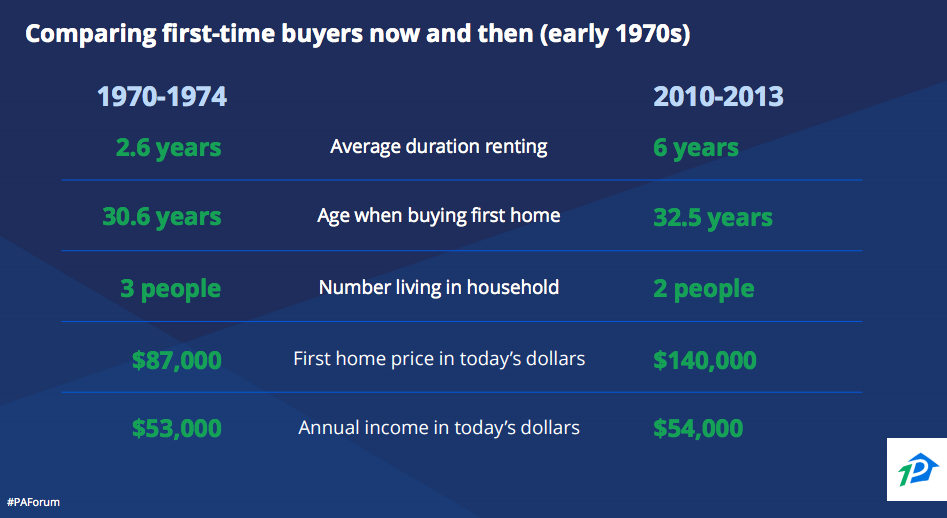First-time home buyers play a critical role in the housing market. The influx of new households into the owner-occupied market is a key source of sales, and provides impetus for existing homeowners to move, liquidate their investment, or trade up to a bigger or better house. They’re the bottom of the home-buying pyramid.
The number of first-time homebuyers has been low since the Great Recession, in spite of recent improvements in housing affordability nationally (at least according to standard metrics like low interest rates and lower housing prices). Total sales of new and existing homes are still well below levels of a decade ago (from more than 8.5 million to 5.3 million), and the National Association of Realtors reports a historic low in the fraction of buyers that are first-timers (30 percent).
These should be good times: the Millennials now just reaching prime homebuying age are the nation’s largest ever generation. But a recent presentation by Zillow’s Stan Humphries laid out a startling picture of how much tougher young adults find it today to transition from renting to buying their first home.

Compared with the 1970s, today’s first-time homebuyers are older, have rented longer, have smaller households, and—strikingly—have less income than did their predecessors.. And critically, the housing they’re looking to buy is much more expensive. While average incomes are down slightly, home prices (in inflation-adjusted terms) have increased 60 percent since the 1970s, (from $87,000 to $140,000).
We know these key metrics (lower incomes, longer rental tenure) reflect the economic headwinds that have plagued the Millennial generation, including higher college costs, more student debt, and a weak job market. On top of that, a much larger fraction of young adults today come from demographic groups (including Latinos and African Americans) whose families generally have less wealth—meaning less familial help to marshall a down payment.
All of these factors lend credence to projections by the Urban Institute and others that housing markets are facing a long period of gerontification. They predict that between now and 2030, all of the net increase in homeownership will be in households aged 65 and older, as Baby Boomers age.
Facing home higher prices, with less income, less accumulated wealth and greater debt—not to mention tougher credit availability—today’s young adults have unsurprisingly not been able to reverse the recent decline in homeownership rates. While the first-time homebuyer is hardly headed for extinction, all these trends taken together suggest that they’ll be a far less numerous and consequential force in housing markets than in years past.

